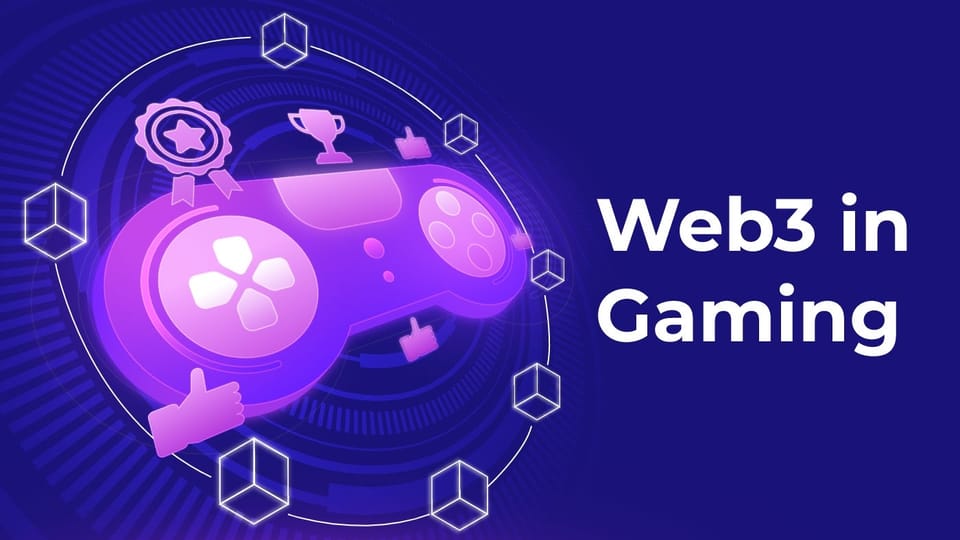Gaming Hub: What is Web 3.0 Gaming?

Web 3.0, or the next generation of the web, continues to reshape several industries. Gaming is one of these industries that benefit from Web 3.0, with its growing list of new games thanks to its promised decentralization and interoperability. Today, there are dozens of Web 3.0 games, including the ones running on the play-to-earn model such as Axie Infinity.
The growing popularity of Web 3.0 has benefitted several industries, gaming included. Game studios and developers directly benefit from the blockchain technology and its underlying characteristics such as decentralization, transparency, and interoperability.
Decentralization is the primary defining characteristic of Web 3.0 gaming, allowing players to own their in-game assets such as NFTs and participate in vibrant economies. Unlike traditional video games that are often centralized and run by big software companies, Web 3.0 games boast transparency and consumer ownership and participation.
These games rely on non-fungible tokens (NFTs) to represent in-game assets that players can hold, swap for other items, or fiat currencies for a profit. NFTs are an important part of the Web 3.0 model since it introduces the concept of ownership which was traditionally outside of players' control. And since Web 3.0 boasts a distributed process where games run on the blockchain, there's no single point of failure. Also, it democratizes the process with players having a say on the gaming process.
If you're new to blockchain gaming, it's easy to get confused with the different types of games in this segment. If you're planning to play these games or just want to get immersed in Web 3.0 gaming, then check out its two popular categories: play-to-earn and idle games.
A look at the play-to-earn gaming model

Play-to-earn is a popular model in blockchain gaming with Axie Infinity and Decentraland as its most popular examples. In these games, players have the opportunity to collect rewards with real-world value. These in-game rewards come in the form of non-fungible tokens (NFTs) or other types of digital assets. In short, there's "value" to collect and earn when one join and play these games. This value comes from the currency that players earn within the platform. Blockchain games run on different models, making these thrilling to play.
Most of these games boast native tokens for in-game purchases which can also be used to swap for fiat currencies. And to start playing these games, players need to invest for in-game specific NFTs. For example, in Axie Infinity, players need to invest in Axies which are NFTs which can be used to play the game.
The play-to-earn model works for both players and game developers. For the player, these blockchain games provide an opportunity to collect rewards for their effort, making gaming more fun, thrilling and potentially rewarding. And for game developers, this model can help boost user engagement and generate new revenue streams through transaction fees and the sale of NFTs and other digital assets. As long there are players supporting the community and there's continuous trading of NFTs, the play-t0-earn model remains relevant.
Passive income from idle crypto games
The play-to-earn model also includes idle crypto games, including popular titles developed in the Avalanche blockchain. Crypto idle games or clicker games are based on simple repetitive actions, such as rapid clicking of a button.
Two popular examples are Notcoin, a play-to-earn game that's integrated into the Telegram messaging app and Hamster Combat. Notcoin has been leading the charge for this game, which currently boasts over 40 million players. Also, the native Notcoin (NOT) token's value has skyrocketed in recent months, hitting $2.75 billion at one point.
Like Axie Infinity and other play-to-earn games, clicker games tap into the growing popularity of the blockchain, and the desire of some players for a passive income stream. In crypto idle games, the player starts with basic characters and resources which can be levelled up or upgraded over time. In most of these games, the objective is to earn tokens or resources through an automated process even if the player is offline. There's continuous progression and the prospects of earning along the way, which appeals to most players.
As mentioned, these games also integrate elements of the blockchain technology like NFTs, which makes these games potentially lucrative. Players can choose to trade or sell these NFTs, boosting the in-game economy.
Addressing the challenges
Web 3.0 gaming has its potential, but it also faces some serious challenges. According to experts, scalability, user experience, and regulatory concerns are the key issues for the industry that needs to be addressed. Scalability is a crucial concern in these games. As more users take part in these games and complete transactions, so too does the strain on the underlying infrastructure and resources.
Developers respond by exploring solutions as such Layer 2 scaling options and interoperability to address scalability issues.
Also, there are regulatory issues facing the Web 3.0 gaming community. As a relatively new concept, Web 3.0 gaming is still largely unregulated, with shifting regulations. One crucial concern for players and developers is the User-Generated Content (UGC), which includes custom maps or other resources created by players within the game.
In Web 2.0, the UGC is secured by an End User License Agreement, allowing players and content creators to earn off the UGC, and also enabling developers to control by owning the copyright. But for Web 3.0 games where players have the rights to these in-game assets such as NFTs, it creates a potential conflict between players, developers, and publishers.
The road ahead for Web 3.0 gaming
Although there are some headwinds in the Web 3.0 gaming niche, developers and the community are forging ahead with new games and innovations. Developers respond with new projects with exciting gameplay mechanics and rewards. In addition to allowing players to take ownership in in-game resources such as NFTs, innovations like provably fair gaming and games that reward passive income are changing the landscape.
Also, there are reports that traditional gaming companies such as Ubisoft and EA are making their investment in the sector. Web 3.0 is growing and there's immense potential in the niche.
And some industry experts and observers are saying that Web 3.0 gaming has yet to see its "killer product", or a game that can trigger mass adoption. In theory, this blockchain can seamlessly integrate blockchain technology while offering its players with an engaging and potentially rewarding gaming experience. Now, if this type of blockchain game becomes available, Web 3.0 gaming can reach its peak popularity.

